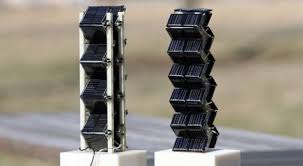
Breaking News
 Quantum walkie-talkie: China tests world's first GPS-free radio for border zones
Quantum walkie-talkie: China tests world's first GPS-free radio for border zones
 RIGHT NOW!: Why was lawyer Van Kessel, of the civil case on the merits in the Netherlands, arrested?
RIGHT NOW!: Why was lawyer Van Kessel, of the civil case on the merits in the Netherlands, arrested?
 PENSION FUNDS PANIC BUYING SILVER – Ratio Below 60 Triggers $50B Wave (Danger Next Week)
PENSION FUNDS PANIC BUYING SILVER – Ratio Below 60 Triggers $50B Wave (Danger Next Week)
 Dollar set for worst year since 2017, yen still in focus
Dollar set for worst year since 2017, yen still in focus
Top Tech News
 EngineAI T800: Born to Disrupt! #EngineAI #robotics #newtechnology #newproduct
EngineAI T800: Born to Disrupt! #EngineAI #robotics #newtechnology #newproduct
 This Silicon Anode Breakthrough Could Mark A Turning Point For EV Batteries [Update]
This Silicon Anode Breakthrough Could Mark A Turning Point For EV Batteries [Update]
 Travel gadget promises to dry and iron your clothes – totally hands-free
Travel gadget promises to dry and iron your clothes – totally hands-free
 Perfect Aircrete, Kitchen Ingredients.
Perfect Aircrete, Kitchen Ingredients.
 Futuristic pixel-raising display lets you feel what's onscreen
Futuristic pixel-raising display lets you feel what's onscreen
 Cutting-Edge Facility Generates Pure Water and Hydrogen Fuel from Seawater for Mere Pennies
Cutting-Edge Facility Generates Pure Water and Hydrogen Fuel from Seawater for Mere Pennies
 This tiny dev board is packed with features for ambitious makers
This tiny dev board is packed with features for ambitious makers
 Scientists Discover Gel to Regrow Tooth Enamel
Scientists Discover Gel to Regrow Tooth Enamel
 Vitamin C and Dandelion Root Killing Cancer Cells -- as Former CDC Director Calls for COVID-19...
Vitamin C and Dandelion Root Killing Cancer Cells -- as Former CDC Director Calls for COVID-19...
 Galactic Brain: US firm plans space-based data centers, power grid to challenge China
Galactic Brain: US firm plans space-based data centers, power grid to challenge China
MIT's Innovative 3D Solar Tower Produces 20x the Energy of Traditional Panels

MIT researchers have discovered a way to maximize the efficiency of solar panels, effectively producing up to 20 times the solar output of traditional flat panels with the same surface area. Through the construction of vertical towers, scientists were able to create 3 different modules that are far more efficient in tracking solar movement and adjusting to changing seasons.
Unlike traditional flat panels that are designed to harness energy when the sun is at its peak, the different permutations were able to track the sun when it was closer to the horizon; consequently, they collected more sunlight and generated a more consistent output of energy over time. Even variations in weather and altering seasons did not deter these 3D modules, as they were still able to produce double the energy of flat panels despite unfavorable conditions.
The team relied on computer modeling to construct and analyze the performance of a multitude of prototypes. The first modeling demonstrated that complex shapes, like a cube with every face dimpled inward, would offer a 10 to 15 percent increase in power when compared to a simple cube. Researchers encountered the issue, however, of this complex structure being too difficult to 3D print.
Scientists determined that the next best option would be to create a simpler cube model, as well as intricate accordion-like shapes that had the benefit of being able to be shipped flat and unfolded on site. This design was the tallest of the modules and intended to be used in parking lots as charging stations for electric vehicles. These structures not only provide a more consistent flow of electricity, but their design allows for multiple towers to be built together, making them far more space efficient than singular flat panels.
While the modules do cost more than flat panels, scientists predict that the vast increase in energy output greatly outweighs the price tag. As head scientist Jeffrey Grossman discussed, the dramatic fall in cost of solar cells in recent years is ultimately what made this project possible.



